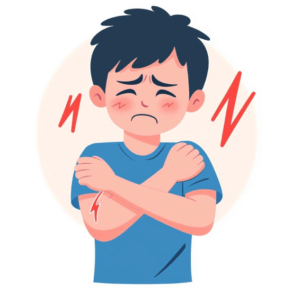In the quest for longevity and wellness, understanding the complexities of our health is crucial—especially when it comes to our children. Juvenile rheumatoid arthritis (JRA), also known as juvenile idiopathic arthritis (JIA), is one such condition that demands our attention. Among its many manifestations, the appearance of a rash is particularly concerning for parents and caregivers. Today, I want to dive into what causes this rash and explore the treatments that can help alleviate its impact on young lives.
Understanding Juvenile Rheumatoid Arthritis
Juvenile rheumatoid arthritis is an autoimmune disorder that affects children under the age of 16. Like adult rheumatoid arthritis, it involves the immune system mistakenly attacking the body’s own tissues, leading to inflammation, pain, and other symptoms. While joint pain and swelling are the most well-known signs of JRA, the condition can also cause a distinctive rash, particularly in its systemic form.
Causes of the Juvenile Rheumatoid Arthritis Rash
1. Immune System Dysfunction:
The rash associated with JRA is primarily the result of the immune system’s overactivity. In an attempt to fight off what it mistakenly perceives as a threat, the body releases a flood of inflammatory chemicals. This immune response, while meant to protect, ends up causing damage to the body’s own tissues, including the skin.
2. Inflammation:
Inflammation is a central feature of JRA, and it doesn’t just affect the joints. When the body is in a state of chronic inflammation, it can manifest in various ways, including the skin. The rash seen in systemic juvenile idiopathic arthritis (SJIA) is a direct consequence of this widespread inflammation.
3. Fever and Rash Connection:
In cases of systemic JRA, the rash often appears alongside fevers. This is because the inflammatory response tends to flare up in cycles, leading to periodic fever spikes. During these flares, the rash can appear suddenly, typically as salmon-pink patches on the trunk, arms, and legs. It’s a unique pattern that can help differentiate a JRA rash from other skin conditions.
Treating the Juvenile Rheumatoid Arthritis Rash
1. Anti-Inflammatory Medications:
Since the rash is driven by inflammation, reducing that inflammation is key to treatment. Nonsteroidal anti-inflammatory drugs (NSAIDs) are often the first line of defense. These medications can help control the overall inflammation in the body, thereby reducing the appearance and severity of the rash.
2. Corticosteroids:
For more severe cases, corticosteroids may be prescribed. These powerful anti-inflammatory drugs can be very effective in quickly controlling symptoms, including the rash. However, due to potential side effects, they are usually used for short periods or in low doses.
3. Disease-Modifying Antirheumatic Drugs (DMARDs):
To manage JRA over the long term, doctors may prescribe DMARDs. These medications work by suppressing the immune system’s overactivity, helping to prevent flare-ups and reduce the frequency of the rash. Methotrexate is one commonly used DMARD for this purpose.
4. Biologic Agents:
In cases where traditional treatments aren’t effective, biologic agents might be considered. These are advanced medications that specifically target the immune system components responsible for inflammation. By neutralizing specific proteins that cause inflammation, biologics can significantly reduce or even eliminate the rash.
5. Skincare and Symptom Management:
While the primary goal is to treat the underlying inflammation, taking care of the skin itself is also important. Gentle skincare products that avoid harsh chemicals and fragrances can help soothe irritated skin. In some cases, topical corticosteroids might be recommended to reduce localized inflammation.
Living with Juvenile Rheumatoid Arthritis
Managing juvenile rheumatoid arthritis is a journey that involves more than just treating symptoms—it’s about supporting the overall well-being of the child. This includes a balanced diet rich in anti-inflammatory foods, regular physical activity tailored to their abilities, and a strong support system. Understanding the causes and treatments of the JRA rash is just one piece of the puzzle, but it’s an important one.

Empowering Ourselves with Knowledge
As we strive to guide our children through their health challenges, knowledge becomes our greatest ally. By understanding the causes and treatments of conditions like JRA, we can make informed decisions that support their journey to wellness.
Let’s continue to embrace every aspect of health with curiosity and compassion, ensuring that we and our loved ones live the vibrant, healthy lives we all deserve.




